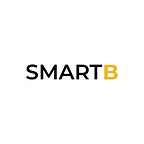Part 3: Emergent standards for impact finance reporting
The previous article set out a general framework for impact finance and the major concepts that characterise it: intentionality, additionality, and measurement.
There are different impact analysis frameworks for defining its measurement.
The most frequently used are the ODDs, IRIS, and IMP.
However, presenting thematic exposure to the Sustainable Development Goals as an impact measure in itself is not sufficient. There are several types of legislative frameworks in place in France that specify the conditions for valid non-financial reporting and whose alignment must be verified when choosing reporting tools:
SFDR: this is the European Regulation on Sustainable Finance Disclosure for Investment Companies
Applicable as of 10/03/2021, it defines a reporting requirement to be produced every June 30 following a full financial year. It comprises 16 mandatory KPIs, most aligned with the European taxonomy, and 32 optional indicators: 15 additional environmental indicators for air, water, and soil emissions, and energy performance + 17 social and societal indicators.
Green Taxonomy: This is the European Commission’s report for financial actors. It is a classification tool providing all economic actors with a shared understanding of “green” activity.
The taxonomy defines three types of green activities:
- Neutral or low-carbon activities,
- Transitional activities, i.e., activities that enable a zero-carbon scenario by 2050,
- Activities that enable the transition, i.e., that help other companies reduce their greenhouse gas emissions.
NFRD: This European regulation transposed into French law for corporate entities sets out the guidelines for the future European extra-financial reporting standard.
The NFRD consists of a 3-stage reporting system:
- A standard section for all companies,
- A sectoral section
- and a company-specific section based on a dual materiality analysis (environmental impacts on the company and the company’s impacts on the environment)
The evolution of the NFRD should focus on the critical issue of the interconnection between financial and non-financial information.
Article 29 of the Energy-Climate Law: This is a French law aimed at institutional investors that sets out the ambitions for aligning finance with the climate commitments made by France in the Paris Agreement.
In particular, it specifies the “173” mechanism provided for in the Energy Transition Act of August 17, 2015, defining the disclosure obligations of institutional investors on their consideration of environmental and social parameters.
What tools should be used to measure the impact of a fund?
How and what to measure?
The implementation of standardized reporting methods allows a fund manager to measure impact and commits his fund to an impact trajectory. In particular, these tools help inform investment decisions, align portfolio companies with objectives, and transparently report on the impact to investors.
Investors can use many tools to implement this reporting and integrate the regulatory provisions mentioned above. These are mainly regulatory reporting or auditing software tools that have evolved to perform CSR impact measurements. Another common alternative for companies is using management software packages (ERP) to set up an extra-financial balance sheet. In both cases, the implementation of this reporting relies on the use of a “framework” or methodological framework. There are several, but the ambition of these methodological frameworks is to establish a consensus to meet regulatory requirements and make the measurement, evaluation, and communication of social and environmental impacts comparable for companies and investors.
The main financial reporting frameworks
Among these methodological frameworks, one of the most recognized is the Impact Management Project (IMP), a collective project led by 13 organizations (PRI, OECD, UNEP FI, B Lab, UN Global, GIIN, IFC,…) and bringing together more than 2,000 industry experts who build best practices.
To help define indicators, the IRIS+ database created in 2019 by the GIIN (Global Impact Investing Network) allows investors to know what and how to measure, depending on the impact sought or the investment theme.
Coming soon…
The measurement of indicators, the standardization, and impact assessment frameworks are essential for developing impact approaches by fund managers. However, as we saw in the previous article, simple measurement is not enough to set up an impact fund. The following article will review the challenges of implementing a rigorous impact approach that incorporates intentionality and additionality. We will also go into more detail on the topic of valuing additionality.
Subscribe to notifications on our Linkedin page to be informed when this article is published.
The additionality.wtf summit organised online on October 26 aims to bring the topic of additionality to the forefront ahead of COP26. Experts, impact funds, NGOs, and committed entrepreneurs will share their concrete achievements and experiences with all participants.
Are you interested in impact finance? A deep dive session will be dedicated to it in the event. Contact us at: team@additionality.wtf for more info or receive a free invitation to the event!
